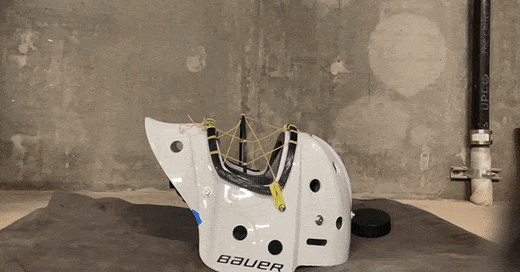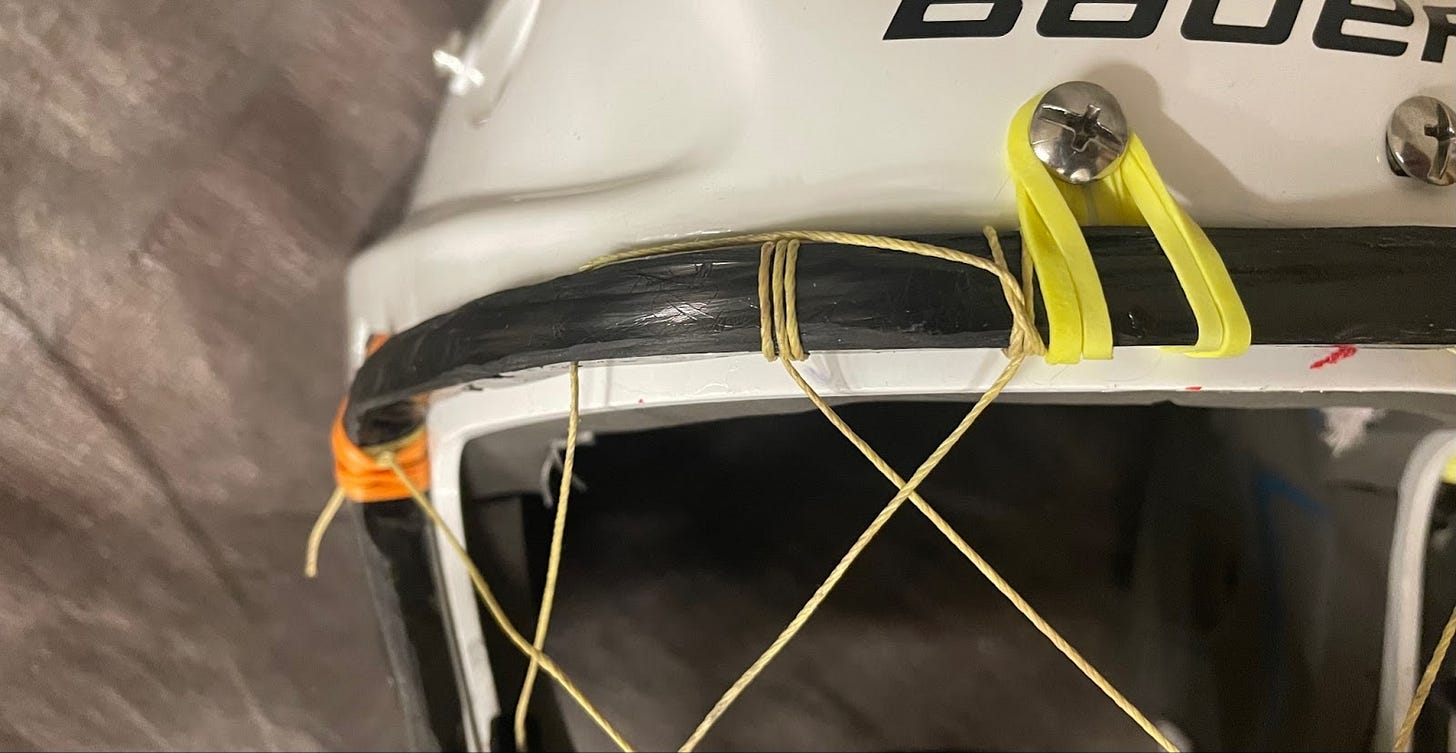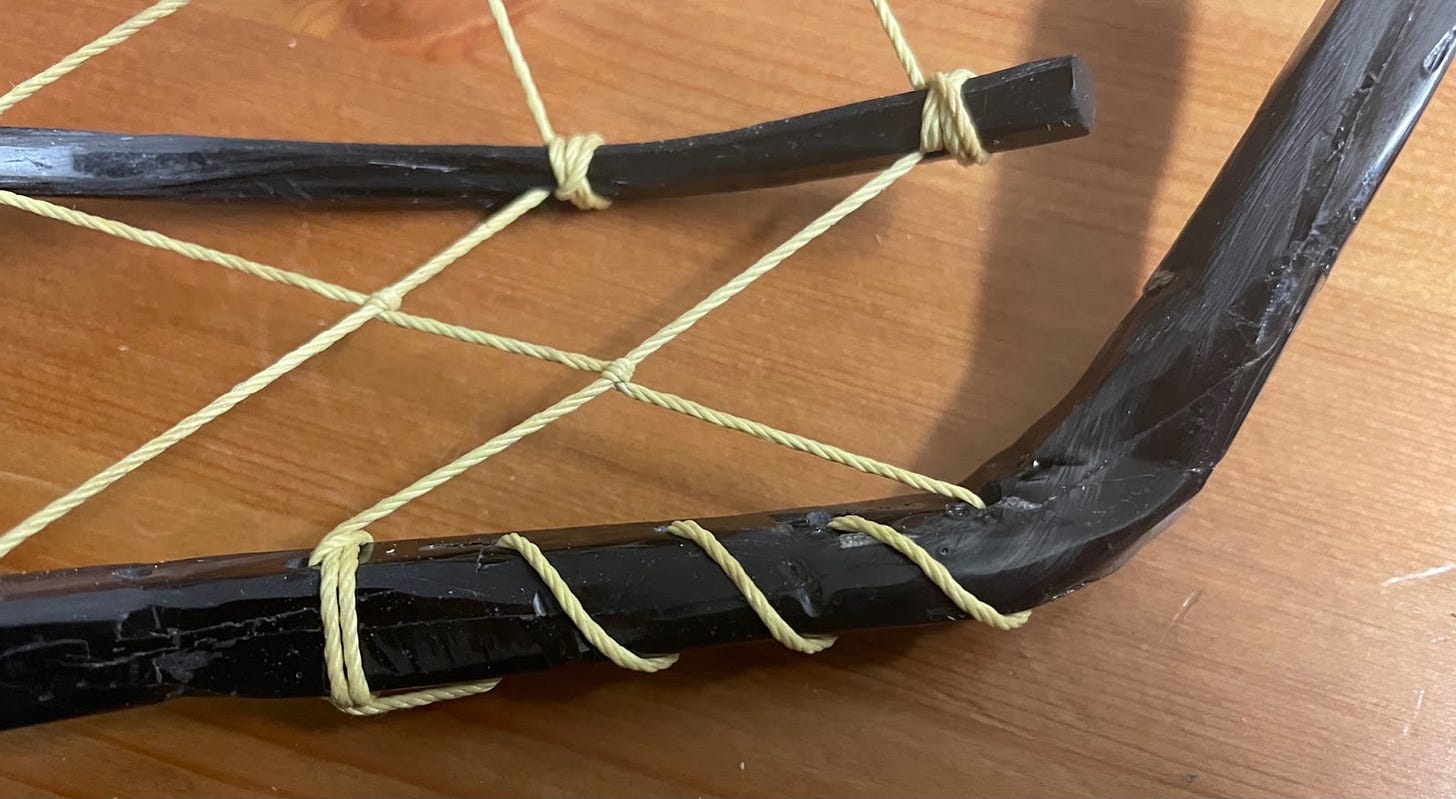An Inventor's Quest for the NHL Pt. 8
Rather than love, than money, than fame, give me a working prototype
This series follows my attempt to develop a product that I dream of getting into the NHL. Previously on the Quest: Part 1, Part 2, Part 3, Part 4, Part 5, Part 6, Part 7
I used to picture the creative process as a peaceful Thoreau-at-Walden-Pond-esque exercise. I now recognize it for what it truly is: a game of Whac-A-Mole. Every time I swat down an issue, a new one pops up. AM *whack* I *whack* DONE *whack* YET?
Spoiler alert: the answer is a hard no.
I discussed my last issue in Part 7, but to quickly recap, the Kevlar threads in my cage were going slack when they were hit with a puck. I eventually found the reason; the threads were shifting and settling into the dips and grooves of the bumpy frame that held them in place. My solution was to make a smoother frame. And, at first, that seemed to work.
Then I dropped a three pound weight on it from five feet up (the equivalent energy of a puck going ~25 mph).
The thread went slack again. What had happened this time?
A couple of different things contributed. First, I wanted to orient the thread in a way that it could most directly oppose the impact of a puck. That desire led me to make a fairly complicated pattern with the thread. Second, I used a single thread instead of a bunch of small fragments. With thread fragments, I’d have to rely solely on the friction of the knots at either end of the thread to keep the thread tight. With a single thread, not only would I have the friction of the knots, but I’d also have the tension in the whole system working together, like a tennis racket.
Those two decisions meant that the thread had to take a convoluted criss-crossed path around the cage, as you can see below.
I’ll focus on the path of the thread at the pink arrow. To follow the pattern I’d laid out, I had to turn the thread from going (more or less) up and down to going side to side. I did that on the backside of the frame with some, shall we say, custom knots.
After dropping the weight on the cage, as the thread found a more comfortable position to settle into, that knot flipped around to the front and introduced a bunch of slack into the system.
I let the problem simmer in the back of my mind for a day or two before I came up with a solution I liked. I didn’t want to rely on a knot to turn the thread from going up and down to side to side, because I didn’t think I could come up with a knot that would keep the thread firmly in place through all the impacts. That meant I had to use the frame itself.
I decided to add holes in the frame so that I could spiral the thread over to its final destination. It ended up being a pretty tidy solution. There was nowhere for the thread to shift and the whole thing was hidden on the backside of the frame.
I felt confident that this particular mole was well and truly whacked, so I dropped that three pound weight on my mask again.
The first few drops went well. On the fourth drop, the middle two threads went slack.
The symptoms looked very similar to the two previous issues, but it had an entirely different diagnosis. In other words, it wasn’t the same mole that kept popping its head back up. At least I had that going for me.
This time around, the crossbar (the floating bar in the middle of the cage) slid down the threads. I’d relied on knots to keep the crossbar in place, but apparently the friction from those knots was not enough to do that. In the next iteration, I’ll try routing the thread differently to keep the crossbar in place with the tension of the thread itself.

I’ve been getting a little frustrated by all this slippage. Every time, I think that I’ve got everything locked down and that there’s no possible way that the thread could go slack. And every time, the thread finds a new and unique way to annoy me.
I suppose I should be thankful that I haven’t had strength issues yet, which would be more difficult to solve. But then again, what’s life without a little self-indulgent self-pity every once in a while?
Thanks as always for reading,
Surjan










Really interesting, I'm enjoying this series very much. Have you considered soaking the knots in epoxy so that they can't move? Or would that not be strong enough to withstand impacts?